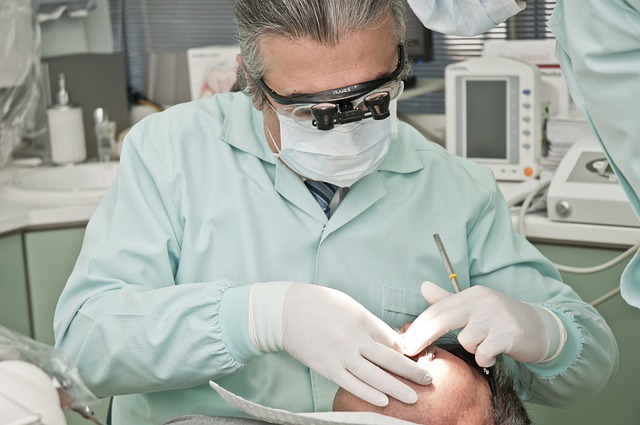1. Introduction to Ruffini Cells

Ruffini cells, also known as Ruffini endings, are specialized sensory receptors found in the skin and joints of mammals. These sensory receptors play a crucial role in detecting changes in mechanical deformation, pressure, and skin stretch. They are named after Angelo Ruffini, an Italian histologist who discovered them in the late 19th century.
Ruffini cells are classified as mechanoreceptors, which means they respond to mechanical stimuli such as pressure and skin stretch. These specialized cells have elongated, spindle-like structures that are wrapped around collagen fibers in the skin and joints. When these collagen fibers are stretched, the Ruffini cells are activated and send signals to the nervous system, informing the brain about the changes in mechanical deformation.
One of the main functions of Ruffini cells is to provide information about the static position of the body and the degree of skin stretch. This information is essential for tasks such as fine motor control, proprioception, and coordination of movements. Ruffini cells are particularly abundant in the hands and feet, where they play a crucial role in sensing pressure, texture, and grip strength.
In addition to their role in proprioception, Ruffini cells also contribute to the sensation of warmth and heat in the skin. When the skin is continuously exposed to warmth or pressure, Ruffini cells respond by releasing neurotransmitters that signal the brain about the thermal stimulus.
Overall, Ruffini cells are essential for our ability to sense and adapt to our environment. Without these specialized sensory receptors, we would not be able to perform daily tasks such as picking up objects, maintaining balance, or sensing temperature changes. So, next time you feel the warmth of the sun on your skin or the texture of a fabric, remember to thank your Ruffini cells for their important role in sensory perception.
2. The Role of Ruffini Cells in Touch Sensation

Ruffini cells are a type of specialized nerve ending found in the skin that play a crucial role in the sensation of touch. These cells are named after their discoverer, Angelo Ruffini, an Italian neurologist who first described them in the early 20th century.
Ruffini cells are located in the dermis of the skin and are particularly abundant in areas where the skin is stretched, such as the fingertips and palms of the hands. These cells are elongated, spindle-shaped structures that wrap around collagen fibers in the skin. When these fibers are stretched or deformed, the Ruffini cells are activated and send signals to the brain via the nervous system.
The role of Ruffini cells in touch sensation is to detect and respond to mechanical forces, such as pressure and skin deformation. They are especially sensitive to sustained pressure and stretching of the skin, which allows us to perceive sensations like the firm grip of a handshake or the sensation of clothing against our skin.
In addition to their role in touch sensation, Ruffini cells also play a role in proprioception, the ability to sense the position and movement of our body parts. This is why they are particularly concentrated in areas of the skin that are subject to frequent manipulation and movement.
Overall, Ruffini cells are an important component of our tactile sense, allowing us to perceive and interact with the world around us. Their specialized structure and function highlight the complexity and sophistication of the human nervous system and its ability to process and respond to a wide range of sensory stimuli.
3. Ruffini Cells and their Contribution to Pain Perception

Ruffini cells are a type of sensory receptor found in the skin and joints of mammals, including humans. These cells play a crucial role in the perception of pain, as they are involved in the detection of mechanical stimuli and the transmission of this information to the brain.
Ruffini cells are classified as low-threshold mechanoreceptors, meaning that they respond to gentle touch and stretching of the skin and surrounding tissues. When these cells are activated by mechanical stimuli, such as pressure or vibration, they generate action potentials that are then transmitted to the central nervous system.
In addition to their role in detecting mechanical stimuli, Ruffini cells also contribute to the modulation of pain perception. Studies have shown that these cells can inhibit the transmission of pain signals in certain circumstances, helping to reduce the sensation of pain and promote a sense of well-being.
Furthermore, Ruffini cells are involved in proprioception, which is the sense of position and movement of the body. By detecting changes in joint angle and muscle tension, these cells help us maintain balance and coordination, as well as perform complex motor tasks.
Overall, Ruffini cells play a crucial role in the perception of pain and the maintenance of bodily functions. Understanding the function of these sensory receptors can help researchers develop new strategies for managing pain and improving quality of life for individuals suffering from chronic pain conditions.
4. The Mechanisms of Ruffini Cells in Sensory Processing

루피니 세포는 신경학적인 감각처리에 중요한 역할을 하는 세포로, 특히 피부의 온도 및 압력감지에 관여하고 있다. 이러한 루피니 세포는 피부의 따뜻한, 차가운, 또는 압력을 감지하여 뇌로 전달하는 역할을 한다. 이러한 신경정보는 뇌로 전달되어 온도와 압력에 대한 감각을 형성하게 된다.
루피니 세포의 작동 메커니즘은 세포 자체에 의해 조절되며, 이는 세포막의 이온 채널을 통해 이루어진다. 이온 채널은 온도 또는 압력 변화에 반응하여 전위를 생성하고 전기적인 신호를 생성하여 감각적인 정보를 전달한다. 이러한 신호는 뇌로 전달되어 특정 온도나 압력의 감각을 형성하게 된다.
루피니 세포는 다양한 감각 정보를 처리하고 전달하는 과정에서 중요한 역할을 한다. 이러한 세포의 작동 메커니즘을 이해함으로써 인간의 감각 체계 및 감각처리에 대한 이해를 높일 수 있으며, 이를 통해 각종 감각 이상의 원인을 밝혀내고 개선하는데 기여할 수 있다. 따라서 루피니 세포의 작용 메커니즘을 연구하고 이를 통해 새로운 치료법이나 감각 향상을 위한 방법을 모색하는 것이 중요하다.
5. Clinical Implications of Ruffini Cells in Pain Management

흉가신압세포는 피부와 말초 신경계에 위치한 특이한 신경세포로, 주로 온도와 진동을 감지하고 손가락과 손목의 위치를 파악하는데 기여합니다. 이러한 세포들이 신경계의 중요한 역할을 하고 있다는 것이 널리 알려져 있지만, 최근 연구들은 이들이 통증 관리에도 중요한 요소임을 보여주고 있습니다.
통증은 신체가 손상을 입었을 때 경험하는 주요 증상 중 하나로, 신경통, 근육통, 두통 등 다양한 형태로 나타날 수 있습니다. 흉가신압세포는 이러한 통증에 대한 인식과 전달에 중요한 역할을 수행하며, 이들의 기능이 통제되지 않으면 만성 통증의 원인이 될 수 있습니다.
그러나 최근 연구들은 흉가신압세포가 통증 관리에도 유용할 수 있다는 가능성을 제시하고 있습니다. 흉가신압세포가 통증을 완화하는 데 어떻게 기여할 수 있는지에 대한 연구는 아직 초기 단계이지만, 특정 조건에서 이들을 타겟팅하여 통증을 완화시킬 수 있는 가능성이 있음을 보여주고 있습니다.
예를 들어, 흉가신압세포에 대한 적절한 자극을 통해 통증 관련 신호를 차단하거나 조절할 수 있을 것으로 기대됩니다. 이는 약물 치료나 수술적 개입 없이도 통증 관리가 가능하게 해줄 수 있으며, 만성 통증으로 고통받는 환자들에게 새로운 치료 옵션을 제공할 수 있을 것입니다.
따라서, 흉가신압세포에 대한 연구는 통증 관리 분야에서 매우 중요한 역할을 할 수 있으며, 앞으로 더 많은 연구가 이루어지고 그 결과가 임상 실무에 적용될 수 있도록 지원되어야 할 것입니다. 이를 통해 만성 통증으로 고통받는 환자들에게 새로운 희망과 치료 기회를 제공할 수 있는 가능성이 열리게 될 것입니다.
